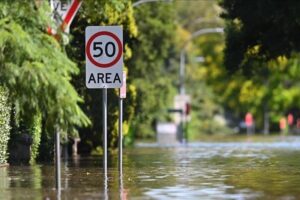Delhi narrowly missed setting a new air quality record as the pollution level improved slightly after being in the “severe” zone for a few hours. The Capital narrowly missed setting a new record on Saturday, with the air quality improving ever so slightly after staying in the “severe” zone for a few hours in the morning.
Delhi clocked a 24-hour average air quality index (AQI) of 389 at 4pm on Saturday, slightly better than the 415 a day ago, according to data from the Central Pollution Control Board (CPCB). Residents woke up to what looked like another day of itchy throats and nausea, with an AQI reading of 417 in the 10am bulletin, after 421 at 8am. If the AQI had remained above the 400-mark (severe) till the end of the day, Saturday would have been Delhi’s tenth severe air day this month — behind only 2021 (11 severe air days). The last time the city witnessed 10 severe air days was in November 2016.
An increase in wind speed may have helped in reducing pollution levels during the day, officials said, while also pinning hopes on the likelihood of a western disturbance leading to rain on Monday which might help settle some of the pollutants.
“The air quality is likely to remain in the ‘Very Poor’ category from November 26 to 28. The predominant surface wind is likely to be coming from Southeast direction with wind speed 4-8 kmph, and partly cloudy sky and shallow fog in the morning on Sunday. The wind direction may change to Northeast by November 27,” CPCB’s forecast said.
The rise in pollution after nearly a week of slightly cleaner air appeared largely wrought by local emissions, including vehicular emissions and dust from construction work, exacerbated by nearly still winds and dipping temperatures.
Data from the Decision Support System (DSS), which estimates the sources of Delhi’s pollution in real-time, on Saturday showed farm fires contributed to a 1.8% of the city’s PM2.5 (an ultrafine pollutant) levels.
In comparison, the estimated contribution from vehicles was 13%. The DSS predicted transboundary pollution from neighbouring Haryana and Uttar Pradesh to dominate Delhi’s pollution for the next few days.
The minimum temperature on Saturday was 10.2°C, one degree below normal for this time of the year, but marginally higher than the last two days, when it stayed below 10°C. The minimum temperature on Thursday and Friday was 9.2°C and 9.4°C, respectively.
Brief relief might be in sight for Delhi, however, due to a likely improvement in meteorological conditions under the influence of a western disturbance expected to affect northwest India from Sunday.
“Northwesterly winds are colder and lead to a drop in temperature, which also negatively impacts air quality. The wind direction switched to coming from southeast and east on Saturday as the western disturbance approaches. This change in wind direction raised mercury again,” said an official from IMD.
Warmer air allows pollutants to rise up and be dispersed.
















